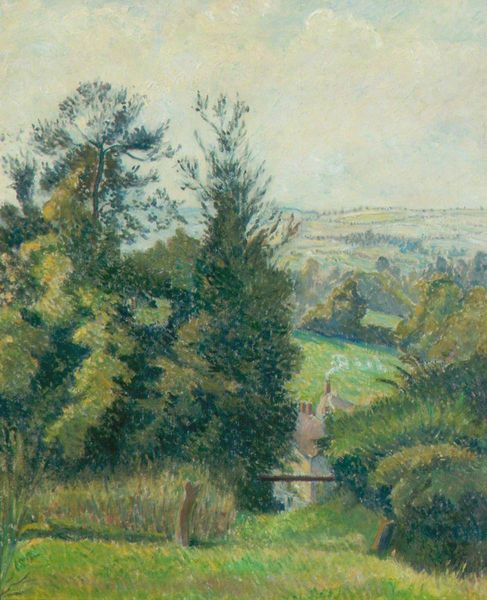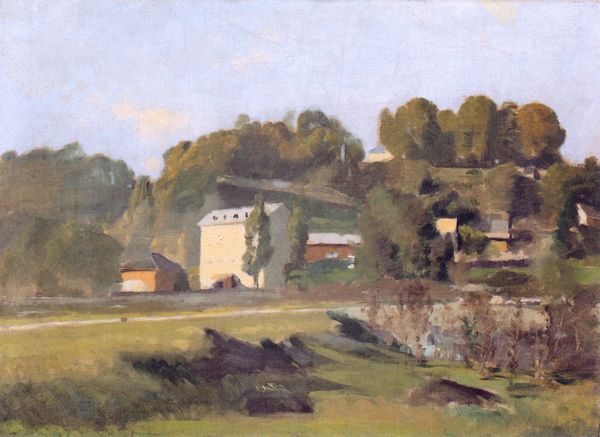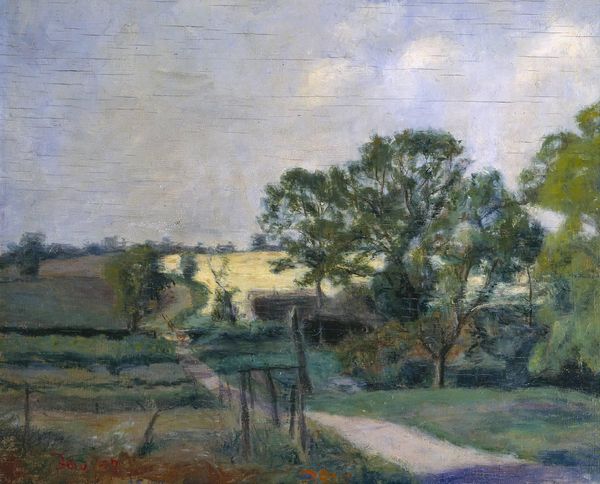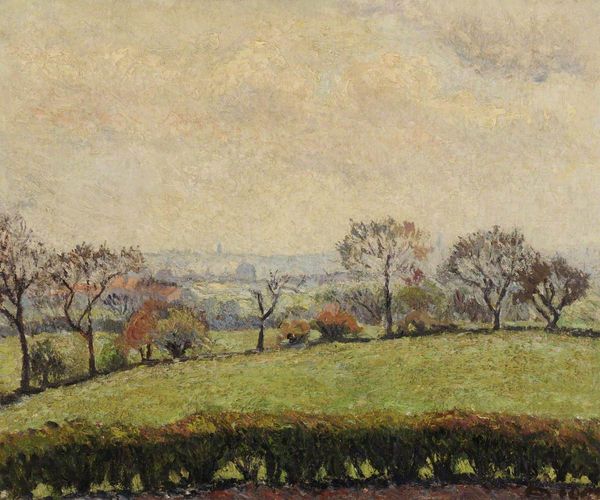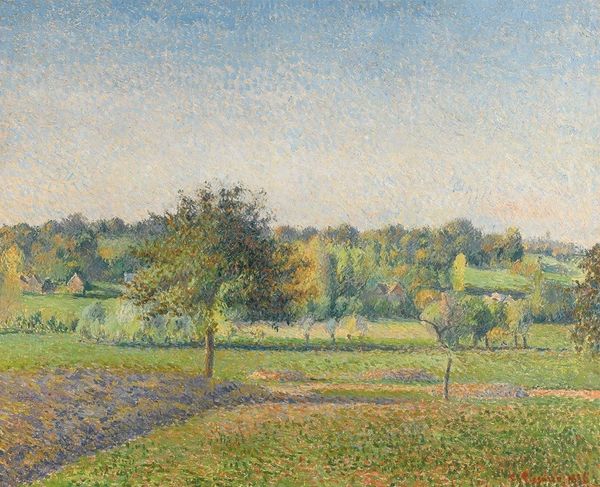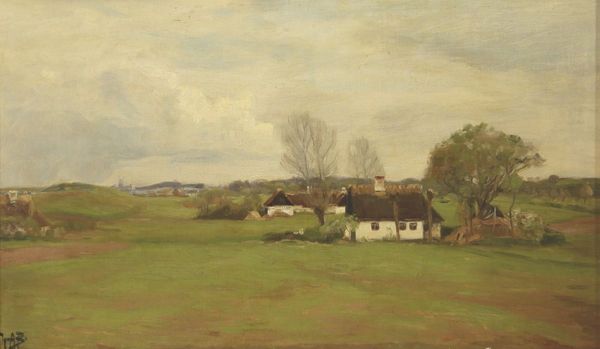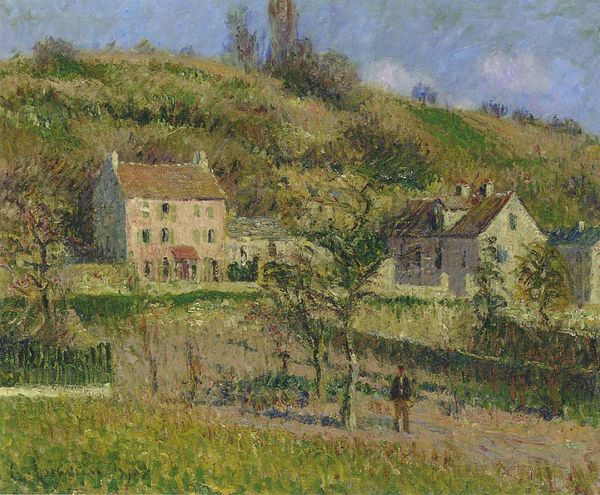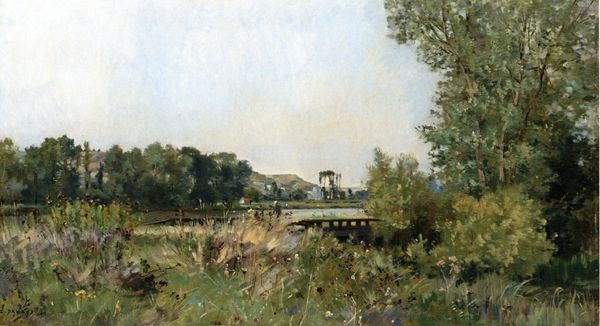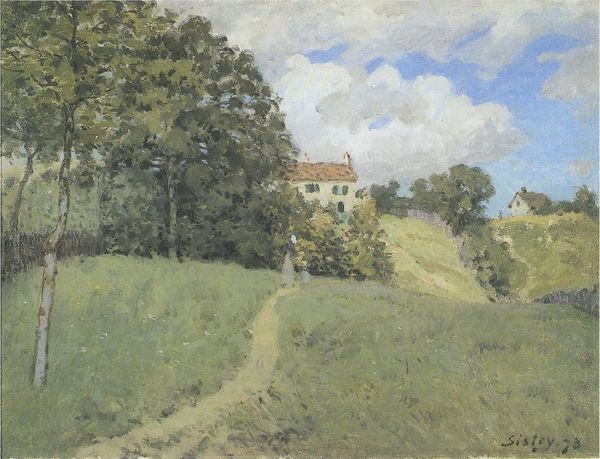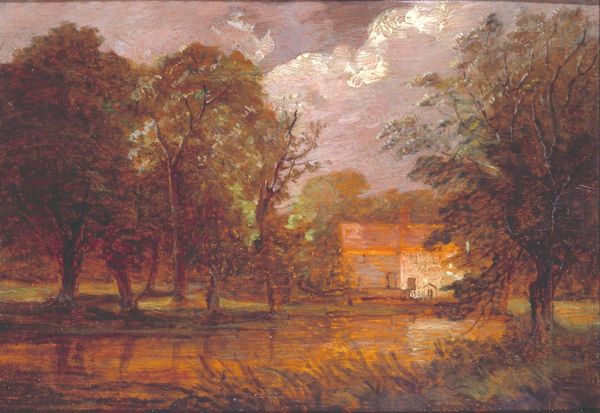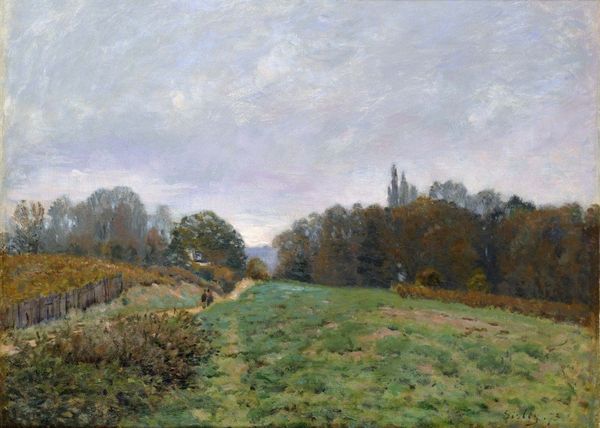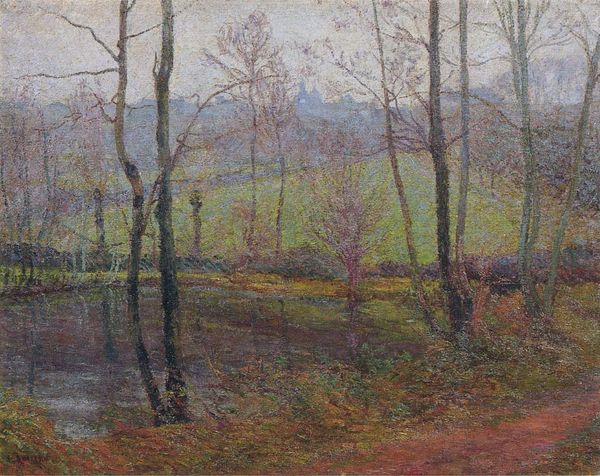
Copyright: Public domain
Editor: Right, so this is Tom Roberts’ "Springtime in Sussex," painted in 1921. It's an oil painting, and the brushstrokes are so loose. The whole piece gives off such a feeling of tranquility, but almost... a melancholy, too? What do you see in this piece, looking at it from a historical context? Curator: Well, first, I'd ask: does the title, “Springtime in Sussex,” give you any immediate associations or ideas? Consider what Sussex, and springtime for that matter, may have represented in 1921. Editor: I guess that postwar, it might represent… hope? Renewal after the war's devastation? A particularly English sort of recovery? Curator: Exactly! And Roberts, an Australian artist, painting a quintessentially English scene. Isn't there an inherent commentary there? The landscape genre itself became heavily politicized. Think about what a tamed, gentle landscape represents versus, say, industrial landscapes or even battlefields. It’s also worthwhile to think about who these scenes were painted for; who had access to them and how did that shape the way the public imagined the idyllic versus the real at the time? Editor: That’s such a great point; the image and the reality being so different then. Thank you for clarifying all of that! I'll certainly look at landscape art in a new light going forward. Curator: Likewise! Analyzing its context encourages you to view this serene landscape not merely as a picture of beauty, but also as an active participant in the public conversation of the period.
Comments
No comments
Be the first to comment and join the conversation on the ultimate creative platform.
